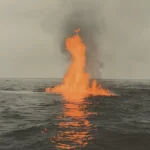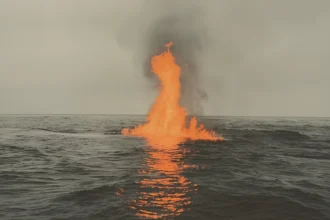What happens when a massive container ship suddenly turns over in the ocean? This terrifying scenario became reality off India’s Kerala coast on May 25, when the MSC Elsa-3 capsized and sank. According to IndiaToday, this incident reveals serious problems with how shipping companies load their vessels.
Understanding What Went Wrong
The MSC Elsa-3, a Liberian-flagged container ship, began leaning dangerously to one side on Saturday before completely turning over. Captain Naveen Singhal, a Singapore-based maritime expert with the International Maritime Organisation, explained that the vessel had stability issues from the start. Think of it like stacking books – if you put all the heavy ones on top, the whole pile will topple over.
Why Ships Lose Their Balance
The main problem lies in how containers are loaded and their actual weights. Maritime experts have identified several critical issues that made this disaster almost inevitable:
- False weight declarations – Shipping companies sometimes lie about container weights to pay lower freight costs, creating dangerous loading plans
- Top-heavy arrangements – When heavier containers sit above lighter ones, the ship becomes unstable like a wobbling tower, making it prone to capsizing
- Rushed loading processes – Fast loading speeds make it impossible to verify actual container weights, leading to improper weight distribution
- Poor container securing – Incorrect lashing and positioning cause containers to shift during storms, making the ship even more unstable
Environmental and Safety Dangers
This accident created multiple hazards beyond the ship sinking. The vessel carried calcium carbide, a dangerous chemical that produces explosive acetylene gas when it touches water. Here’s what this means:
| Hazard Type | Simple Explanation |
| Chemical contamination | Calcium carbide mixing with seawater creates toxic gases that harm marine life |
| Container debris | Six to eight containers washed ashore, with 13 containing hazardous materials |
| Environmental damage | Pollution spreads through India’s Exclusive Economic Zone, affecting fishing communities |
What Happens Next
India’s Director General of Shipping will lead the investigation into this disaster. The ship’s insurance will cover environmental cleanup costs and damages to affected communities.
However, this incident highlights an urgent need for stricter maritime safety rules and better technology to verify container weights before loading ships.











